What’s the Real Cost of Staying in a Punta Cana Apartment (With All the Extras)?
Understanding the Basics: Rent and Location
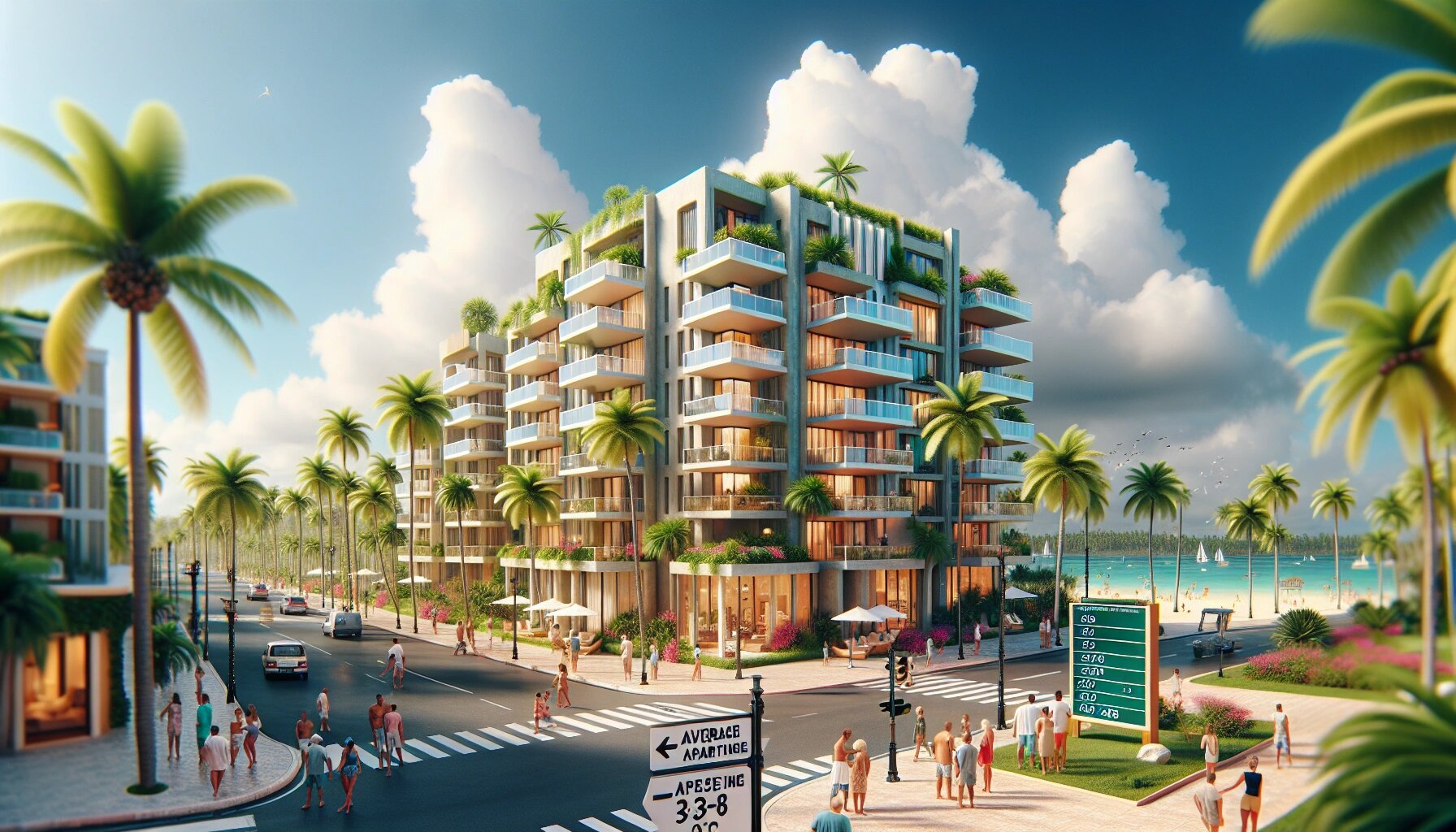
What’s the Real Cost of Staying in a Punta Cana Apartment (With All the Extras)?
When considering a stay in Punta Cana, understanding the foundational costs of renting an apartment is crucial. From rent prices to the influence of location, several factors contribute to the overall expense. This section delves into these elements, offering insights into what you can expect when budgeting for your tropical getaway.
1. Average Rent Prices in Punta Cana
Renting an apartment in Punta Cana can be a cost-effective option, but prices vary significantly based on the type of accommodation. Studio apartments, typically the least expensive option, range from $400 to $700 per month. These are ideal for solo travelers or couples who require only basic amenities.
For those seeking a bit more space, one-bedroom units are available at prices ranging from $600 to $1,200 monthly. These apartments often provide extra amenities such as a separate living area and a kitchen, making them suitable for longer stays.
Two-bedroom apartments cater to families or groups, with prices ranging from $1,000 to $2,000 per month. These units generally offer more amenities and are located in desirable areas. It is essential to consider what is included in the rent (such as utilities and internet) as this can impact the overall cost of living.
2. Influence of Location on Cost
Location plays a significant role in determining the rent prices in Punta Cana. Apartments near the beachfront or in popular tourist areas like Bávaro or Cap Cana tend to demand higher rents due to their proximity to attractions and stunning views.
Conversely, areas further from the coast or the city center may offer more affordable options. For example, apartments in Verón or other inland areas can be up to 30% cheaper than those close to the beach. However, these savings must be weighed against potential transportation costs if you plan to visit coastal areas frequently.
Comparison of Rent Prices by Location
| Area | Studio Apartment | One-Bedroom Apartment | Two-Bedroom Apartment |
|---|---|---|---|
| Beachfront | $600 – $700 | $1,000 – $1,200 | $1,500 – $2,000 |
| City Center | $500 – $600 | $800 – $1,000 | $1,200 – $1,800 |
| Inland Areas | $400 – $500 | $600 – $800 | $1,000 – $1,500 |
3. Seasonal Variations in Rent
The rental prices in Punta Cana are subject to seasonal variations, with significant differences between peak and off-peak seasons. During the high tourist season, which generally spans from December to April, rent prices can increase by 20-30%. This period coincides with the winter months in the Northern Hemisphere, attracting visitors seeking to escape the cold.
In contrast, the low season, from May to November, sees a decrease in rental demand, leading to lower prices. During this time, renters can often negotiate better rates or find special offers. However, it’s important to note that the off-peak season may also coincide with the hurricane season, which could affect travel plans.
Understanding the nuances of rent and location in Punta Cana is vital for budget planning. By considering the type of apartment, its location, and the timing of your stay, you can optimize your living arrangements for both comfort and cost-efficiency.
Utilities and Hidden Costs
When planning a stay in a Punta Cana apartment, understanding the full scope of expenses is essential to avoid unpleasant financial surprises. Beyond the basic rent, utilities and hidden costs can significantly influence your overall budget. Navigating these additional expenses can be complex but is crucial for a seamless experience.
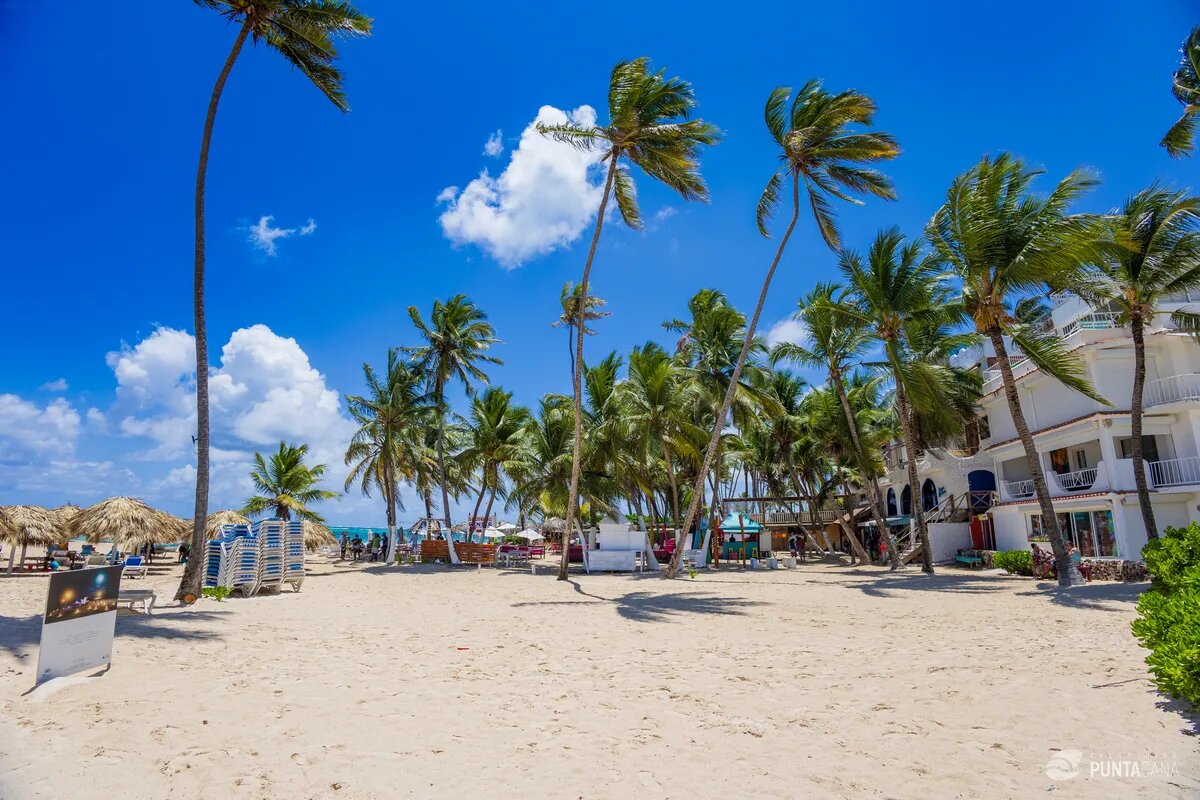
Punta Cana
1. Utility Expenses: What to Expect
Utility expenses in Punta Cana can fluctuate depending on consumption habits and the time of year. Electricity is often the most significant utility cost due to the frequent use of air conditioning in the tropical climate. On average, electricity bills can range from $50 to $150 per month, but this can increase during hotter months when cooling needs rise.
Water costs are generally modest, typically around $10 to $20 monthly, but it’s important to note that water conservation is encouraged due to its limited supply in the region. Internet services, crucial for remote work and entertainment, generally cost between $30 and $60 per month, depending on the speed and provider selected.
Utility Expenses in Punta Cana
| Utility | Average Monthly Cost | Notes |
|---|---|---|
| Electricity | $50 – $150 | Varies with A/C usage |
| Water | $10 – $20 | Conservation encouraged |
| Internet | $30 – $60 | Depends on speed |
2. Maintenance and Repair Fees
While renting in Punta Cana, it’s crucial to understand the policies regarding maintenance and repairs. Typically, rental agreements specify whether the landlord or tenant is responsible for various repairs. Minor issues, such as light bulb replacements or minor plumbing problems, might fall under the tenant’s responsibility. In contrast, significant repairs, such as air conditioning unit malfunctions, are usually handled by the landlord.
Before committing to a rental, review the lease agreement’s maintenance clauses to avoid unexpected expenses. If the property management company covers maintenance, ensure this is explicitly stated to prevent disputes.
3. Unexpected Expenses and Fees
When renting an apartment, several hidden costs can arise, catching unprepared renters off guard. Security deposits are a common requirement and typically equate to one month’s rent. This deposit covers potential damages and is refundable upon lease completion, assuming no significant damage occurs.
Cleaning fees are another consideration, particularly for short-term rentals. These fees can range from $50 to $100, depending on the apartment size and level of cleanliness required. Additionally, some properties may charge fees for amenities like pool access or gym usage, so it’s essential to inquire about these when viewing potential rentals.
Understanding these utilities and hidden costs ensures a more transparent budgeting process for your Punta Cana stay. Thoroughly reviewing rental agreements and asking the right questions can prevent unexpected financial burdens.
Furnishing and Household Necessities
Embarking on a temporary stay in Punta Cana requires more than just securing an apartment. Understanding the costs of furnishing and equipping your new space is crucial to ensure comfort and convenience during your stay.
1. Cost of Furnishing an Apartment
Setting up an apartment in Punta Cana can be a blend of exciting and overwhelming, especially when it comes to furnishing. The cost of furnishing an apartment depends significantly on your lifestyle preferences and the duration of your stay. For those planning a short-term stay, renting furniture might be the most economical option. On average, renting basic furnishings for a one-bedroom apartment can cost around $150 to $300 per month.
For those opting to purchase furniture, the expenses can vary widely. The cost of a basic furniture package, which includes a bed, sofa, dining table, and chairs, might start at approximately $1,500 and can go upwards depending on the quality and style of the furniture. If you’re looking for high-end or designer pieces, expect these costs to increase substantially.
2. Household Items and Essentials
Beyond furniture, stocking up on household essentials is another key expense to consider. Start with kitchenware, as having the right tools can make your stay more enjoyable and might save you money by reducing the need to eat out. A basic kitchen set, including pots, pans, and utensils, could cost around $100 to $200.
Bedding and bathroom linens are also essential. A decent set of sheets and towels might set you back an additional $100. Don’t forget about toiletries and cleaning supplies, which can add another $50 to $100 to your initial setup costs.
Estimated Costs for Essential Household Items
| Item Category | Estimated Cost Range | Notes |
|---|---|---|
| Kitchenware | $100 – $200 | Includes basic pots, pans, and utensils |
| Bedding & Linens | $100 | Basic sheets, pillowcases, and towels |
| Toiletries & Cleaning Supplies | $50 – $100 | Initial purchase for basics |
3. Options for Furnished Rentals
For those who prefer to avoid the hassle of furnishing an apartment from scratch, furnished rentals are a viable option. These accommodations typically come equipped with all necessary furniture and often include household essentials, making them a convenient choice for short-term stays. However, the convenience comes with a price tag.
Furnished rentals in Punta Cana can be 10% to 20% more expensive than their unfurnished counterparts. While this might seem like a steep increase, it can actually be cost-effective when considering the time, effort, and money saved on purchasing and setting up furniture and essentials.
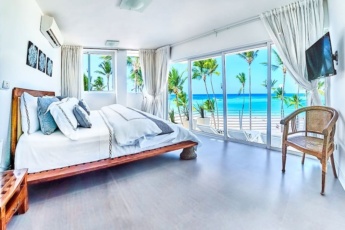
Ocean View Penthouse Right on Bávaro Beach, Punta Cana
from $413 / night Read more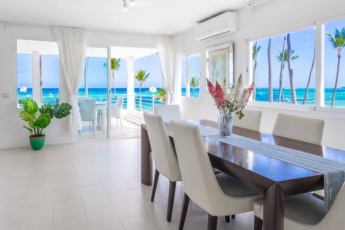
Oceanfront Apartment with Amazing View – Right on Bávaro Beach
from $314 / night Read more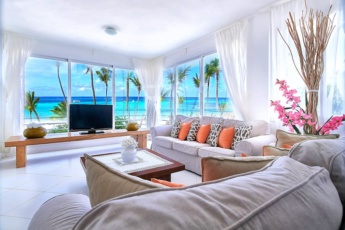
Luxury Punta Cana Ocean View Apartment – Directly on Bávaro Beach
from $331 / night Read moreExplore Our Furnished Apartments in Punta Cana
Discover a range of furnished apartment options that offer comfort and convenience, perfect for those looking to enjoy Punta Cana without the hassle of furnishing from scratch. Whether you prefer a cozy studio or a spacious two-bedroom unit, our properties cater to various tastes and requirements.
Transportation and Accessibility
Transportation in Punta Cana is a critical aspect that can significantly influence your overall experience and budget. Understanding the various options and their associated costs can help you plan effectively and maximize your stay in this vibrant locale.
1. Public Transportation Costs
Public transportation in Punta Cana is relatively affordable and offers a convenient way to explore the area. The local bus system, known as “guaguas,” is the most common form of public transport, providing routes that cover key areas and tourist spots. Fares typically range from $0.50 to $1.00 USD per ride, making it an economical choice for budget-conscious travelers.
However, public transportation might not always offer the flexibility desired by tourists, as buses can be infrequent and crowded, especially during peak times. For those looking for a middle ground, shared shuttles and taxis provide a more comfortable option, albeit at a higher cost. Shared shuttles can charge around $10 to $15 USD per person for transportation to popular destinations or from the airport to your accommodation.
2. Car Rentals and Fuel Prices
Renting a car in Punta Cana offers the greatest flexibility, allowing you to explore at your own pace. The cost of renting a car can vary significantly depending on the type of vehicle and rental company. On average, expect to pay around $30 to $60 USD per day for a standard car rental. It’s wise to book in advance and compare deals online to secure the best rates.
Fuel prices in Punta Cana are comparable to those in the US, with the average price per gallon hovering around $4.00 to $5.00 USD. It’s important to factor in these costs when considering a car rental, along with potential insurance and additional fees.
Comparison of Transportation Costs in Punta Cana
| Mode of Transportation | Cost Range (USD) | Pros | Cons |
|---|---|---|---|
| Public Bus (Guaguas) | $0.50 – $1.00 per ride | Economical, covers key areas | Infrequent, crowded |
| Shuttles | $10 – $15 per person | Convenient, comfortable | Higher cost than buses |
| Car Rental | $30 – $60 per day | Flexible, private | Higher cost, fuel expenses |
3. Proximity to Essential Services
The location of your apartment in Punta Cana can greatly influence your transportation choices and overall convenience. Apartments located closer to essential services like grocery stores, healthcare facilities, and entertainment venues reduce the need for frequent long-distance travel, thereby saving on transportation costs.
For instance, staying near the city center or popular beach areas ensures that you have easy access to a variety of restaurants, shops, and nightlife, potentially allowing for walking or short taxi rides rather than longer trips that require a car or public transport. Additionally, proximity to healthcare services is crucial, especially for families or those with medical needs, ensuring that help is readily accessible if needed.
Choosing the right location can enhance your Punta Cana experience by minimizing transportation hassles and expenses, allowing for more time to enjoy the beautiful surroundings and activities that this tropical paradise has to offer.
Dining and Grocery Expenses
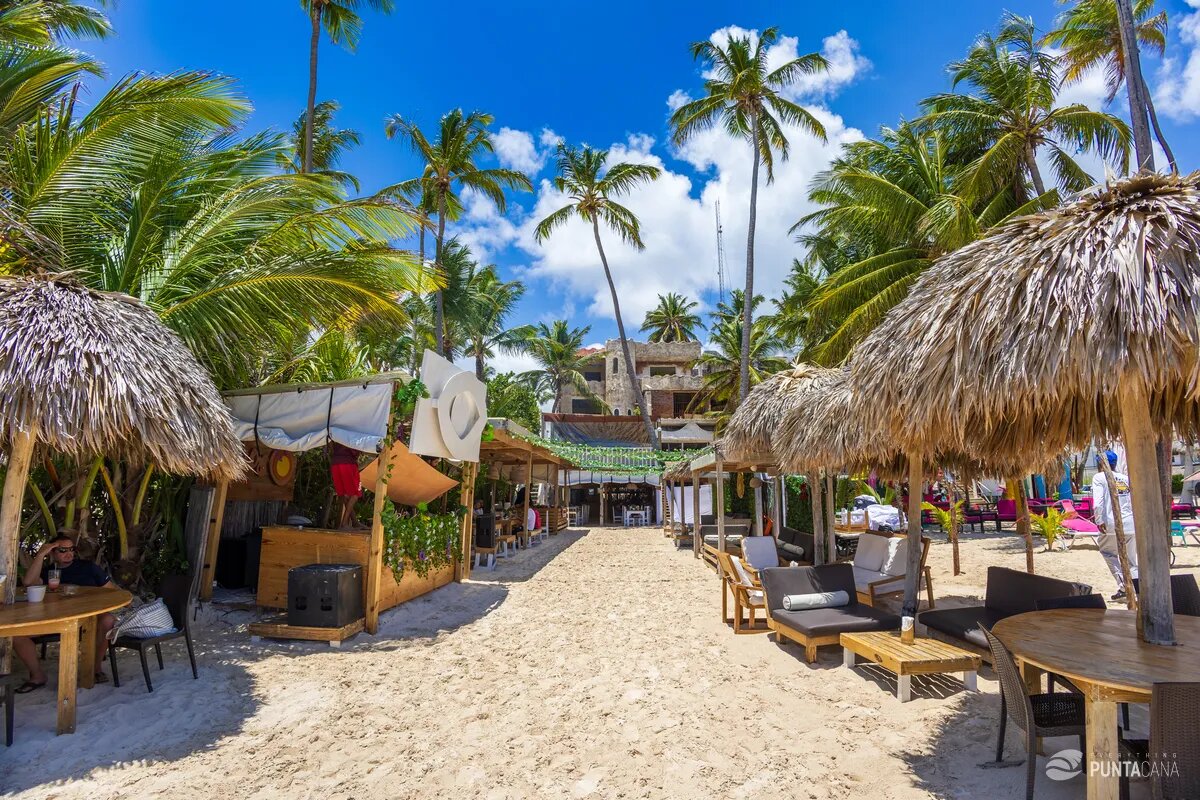
Punta Cana
Exploring culinary delights is a significant part of the Punta Cana experience. Whether you’re savoring local dishes at a beachside restaurant or cooking a meal in your apartment, understanding the costs of dining and groceries can help you manage your budget effectively.
1. Eating Out: Restaurant and Cafe Prices
Dining out in Punta Cana can range from affordable local eateries to high-end restaurants offering international cuisines. The cost of eating out depends largely on the type of restaurant and its location. Local “comedor” or casual eateries often offer meals for as low as $5 to $10, providing authentic Dominican flavors at a budget-friendly price. In contrast, dining at upscale restaurants or beachfront cafes can cost anywhere from $25 to $50 per person, excluding beverages.
- Budget Eateries: $5 – $10 per meal
- Mid-range Restaurants: $15 – $30 per meal
- High-end Dining: $25 – $50+ per meal
It’s also important to consider that Punta Cana’s tourism-driven economy often results in slightly higher prices for dining out, especially in areas densely populated with resorts and attractions.
2. Grocery Shopping: Local and Imported Goods
Grocery shopping in Punta Cana offers a mix of local and imported goods, affecting the overall cost. Local produce and staples like rice, beans, and fresh fruits are generally affordable. In contrast, imported goods, particularly those catering to a Western diet, can be significantly more expensive due to importation taxes and logistics.
Cost Comparison: Local vs. Imported Goods
| Item | Local Product Cost | Imported Product Cost |
|---|---|---|
| Rice (1 kg) | $1.50 | $2.50 |
| Bananas (1 dozen) | $1.20 | $1.80 |
| Cereal (box) | $3.00 | $5.50 |
| Milk (1 liter) | $1.20 | $2.00 |
Shopping at local markets and supermarkets like Jumbo or Super Pola can offer more competitive prices and a chance to experience the vibrant local culture.
3. Balancing Eating Out and Cooking at Home
To manage dining expenses effectively, striking a balance between eating out and cooking at home is essential. For those staying in Punta Cana for an extended period, cooking at home can significantly reduce costs. Purchasing local ingredients and preparing meals can provide a more economical and healthy alternative to dining out frequently.
Consider creating a meal plan that involves cooking a few meals at home while allowing for the occasional dining out experience to enjoy the local cuisine. This approach not only helps in saving money but also offers a more immersive cultural experience by trying local recipes and ingredients.
By understanding the nuances of dining and grocery expenses in Punta Cana, you can make informed choices that enhance your stay without breaking the bank. Whether you’re a culinary adventurer or prefer the comfort of home-cooked meals, Punta Cana offers a diverse range of options to suit every palate and budget.
Recreational Activities and Entertainment
Punta Cana is not just a paradise for relaxation; it’s a vibrant hub of recreational activities and entertainment. Understanding the costs associated with these experiences can help you budget effectively, ensuring you make the most of your stay without any financial surprises.
1. Beach and Water Activities
Punta Cana’s stunning coastline offers a myriad of beach and water activities that are both exhilarating and memorable. From snorkeling in the crystal-clear waters to embarking on a thrilling boat tour, the options are endless.
- Snorkeling and Diving: Prices for snorkeling can range from $30 to $50 per person, while diving excursions typically start at $70, depending on the location and duration.
- Boat Tours: A half-day boat tour can cost around $75 per person. These tours often include drinks and snacks, making them a great value.
- Jet Ski Rentals: For those seeking an adrenaline rush, jet ski rentals are available at approximately $60 for a half-hour session.
Comparative Costs of Popular Water Activities
| Activity | Average Cost (USD) | Inclusions |
|---|---|---|
| Snorkeling | $30-$50 | Equipment, Guide |
| Diving | $70+ | Equipment, Guide, Boat |
| Boat Tour | $75 | Snacks, Drinks |
| Jet Ski | $60 | 30-minute Session |
2. Cultural and Historical Attractions
Exploring Punta Cana’s rich cultural and historical sites is an enriching experience that doesn’t have to break the bank. From ancient ruins to museums, there is plenty to see.
- Indigenous Eyes Ecological Park: Entry fees are around $50 per person, offering a day of exploration of the park’s lush landscapes and lagoons.
- Hoyo Azul Lagoon: A must-see natural attraction, with tours costing approximately $45 per person including transportation.
- Historical Sites: Visits to historical sites like the Basilica of La Altagracia may have entry fees around $25, providing insights into the area’s religious and cultural heritage.
3. Nightlife and Entertainment Venues
The nightlife in Punta Cana is as lively as its daytime attractions. From beach clubs to vibrant bars, the area offers numerous entertainment options.
- Beach Clubs: Entry fees to popular beach clubs can range from $20 to $50, often including a welcome drink.
- Nightclubs: Cover charges for nightclubs are typically around $30, with some offering package deals that include drinks.
- Live Shows: Enjoying a live show or concert may cost between $40 and $100, depending on the performer and venue.
By understanding the costs associated with Punta Cana’s diverse recreational activities, visitors can plan their budget effectively and indulge in the experiences that make this destination truly unforgettable.
Frequently Asked Questions
What are the average rental prices for apartments in Punta Cana?
The average rental prices for apartments in Punta Cana can vary depending on the location, size, and amenities. Typically, you might find prices ranging from $50 to $150 per night for short-term rentals. Long-term rentals could range from $500 to $1,500 per month.
What additional costs should I expect when staying in a Punta Cana apartment?
When staying in a Punta Cana apartment, additional costs may include utilities (electricity, water, internet), transportation, groceries, and activities or excursions. Some apartments may also charge for cleaning services or have security deposits.
Are utilities usually included in the apartment rental price in Punta Cana?
Utilities are not always included in the rental price of apartments in Punta Cana. It’s important to clarify with the property owner or manager whether utilities such as electricity, water, and internet are included in your rental agreement.
How much should I budget for food and groceries in Punta Cana?
For food and groceries, you might spend around $150 to $300 per month, depending on your eating habits and preferences. Dining out in local restaurants can cost anywhere from $5 to $20 per meal per person.
What is the cost of transportation in Punta Cana?
Transportation costs in Punta Cana can vary. Taxis typically charge about $10 to $20 for short trips, while renting a car might cost around $30 to $70 per day. Public transportation is more affordable, with fares around $1 per ride.
Are there any hidden fees to be aware of when renting an apartment in Punta Cana?
While most fees are usually disclosed upfront, be cautious of potential hidden fees such as additional charges for utilities, cleaning services, or penalties for damages. Always read the rental agreement carefully and ask for clarification if needed.
Is it necessary to have travel insurance when staying in an apartment in Punta Cana?
While not mandatory, having travel insurance is highly recommended when staying in Punta Cana. It can cover unexpected events such as medical emergencies, trip cancellations, or lost belongings, providing peace of mind during your stay.
What should I know about safety and security when renting an apartment in Punta Cana?
Punta Cana is generally safe for tourists, but it’s wise to take precautions. Choose apartments in secure areas, lock doors and windows, and avoid displaying valuables. Ask the property owner about security measures in place.
Are there discounts available for longer stays in Punta Cana apartments?
Many apartment rentals in Punta Cana offer discounts for longer stays, such as weekly or monthly rates that are lower than the daily rate. It’s advisable to negotiate with the property owner or manager for the best deal.
Updated on: . Author:
